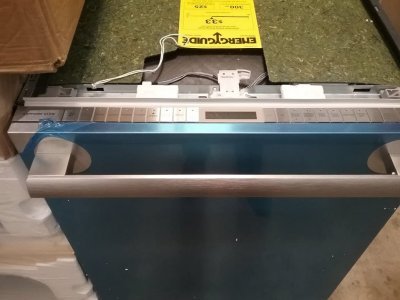Dishwashers are one of the most convenient appliances in our homes. They save us time and energy while ensuring that our dishes come out clean and sparkling. However, like all appliances, dishwashers need to be properly installed to function correctly. One essential component of a dishwasher’s installation is the leveling legs. In this article, we will discuss dishwasher leveling legs, including their purpose, compatibility, and how to level them.
Table of Contents
What are Dishwasher Leveling Legs?
Dishwasher leveling legs are an essential component of any dishwasher. They are adjustable feet that help to ensure that the dishwasher sits straight and level on the floor. If your dishwasher is not level, it can cause problems with the way it operates. For example, if it’s tilted forward, water may pool at the bottom of the machine and not drain properly. On the other hand, if it’s tilted backward, water can leak out of the front door.
Leveling legs can be adjusted by turning them clockwise or counterclockwise to raise or lower each corner of your dishwasher until it sits perfectly flat on your kitchen floor. Most dishwashers come with four leveling legs that you can adjust using a wrench or pliers. It’s important to make sure that all four legs are adjusted equally to prevent any wobbling or rocking during operation.
Dishwasher leveling legs are small adjustable feet located at the bottom of the dishwasher. They help stabilize the appliance and keep it level. Leveling legs are crucial because if the dishwasher is not level, it may leak, create excessive noise, and not clean dishes correctly.
Are Dishwasher Leveling Legs Universal?
The short answer is no. Dishwasher leveling legs are not universal, and each manufacturer has its own unique design. However, there are some similarities between different brands, which can make it easier to identify the right type of leveling legs for your dishwasher.
Samsung Dishwasher Leveling Legs
Samsung dishwasher leveling legs are similar to those of many other brands. They consist of adjustable feet that screw into the bottom of the appliance. To level a Samsung dishwasher, you can adjust the leveling legs by turning them clockwise or counterclockwise. Samsung also provides a leveling tool with some of its dishwasher models, making it easier to get the perfect level.
GE Dishwasher Leveling Legs
GE dishwasher leveling legs are slightly different from those of other brands. They have a unique two-piece design consisting of a base and a foot. The base attaches to the dishwasher, and the foot screws into the base. To level a GE dishwasher, you need to adjust the foot, not the base. The foot is threaded, allowing you to turn it clockwise or counterclockwise to raise or lower the appliance’s height.

What Size Are GE Dishwasher Leveling Legs?
GE dishwasher leveling legs are 1/4 inch in diameter and 20 threads per inch (TPI). This size is standard across most dishwasher brands, so you can use the same leveling legs for most dishwashers.
Are Whirlpool Dishwasher Leveling Legs Universal?
Whirlpool dishwasher leveling legs are similar to those of other brands, such as Samsung. They are adjustable feet that screw into the bottom of the appliance. To level a Whirlpool dishwasher, you can adjust the leveling legs by turning them clockwise or counterclockwise. Whirlpool also provides a leveling tool with some of its dishwasher models, making it easier to get the perfect level.
How to Level Dishwasher Leveling Legs
Now that you know the different types of dishwasher leveling legs, it’s time to learn how to level them. Here are the steps:
- Turn off the dishwasher and unplug it from the power source. It’s essential to do this to avoid electrocution and ensure your safety.
- Locate the leveling legs at the bottom of the dishwasher. Most dishwashers have four leveling legs, but some models may have six.
- Determine which leveling leg needs adjusting. You can use a spirit level to check the dishwasher’s levelness. Place the spirit level on the bottom rack of the dishwasher and check the bubble.
- Adjust the leveling leg. To raise the dishwasher, turn the leveling leg counterclockwise. To lower it, turn the leveling leg clockwise.
- Check the levelness again. Repeat steps 3 and 4 until the dishwasher is level.
- Once the dishwasher is level, plug it back in and turn it on. Test it to ensure that it’s working correctly.
Dishwasher Leveling Legs Stuck
If the dishwasher leveling legs are stuck, you may need to take a few steps to get them unstuck. First, remove any debris or dirt that may be blocking the threads of the legs. If this doesn’t work, you may need to use a pair of pliers to grip and twist the leg until it loosens up. If all else fails, you can try using a lubricant like WD-40 to help loosen the threads. Make sure to apply it sparingly so as not to damage any of the components around the legs. Once you have successfully freed up the legs, make sure to adjust them so that they are level with each other before running your dishwasher cycle.
Conclusion
Dishwasher leveling legs are essential for stabilizing and leveling your dishwasher. While each manufacturer has
its unique design for leveling legs, there are some similarities between different brands that can make it easier to identify the right type of leveling legs for your dishwasher. For example, most leveling legs have a 1/4 inch diameter and 20 TPI, making it possible to use the same leveling legs for most dishwashers.
When installing or adjusting the leveling legs of your dishwasher, it’s essential to follow the manufacturer’s instructions carefully. Failure to do so can result in an unstable dishwasher that may leak, create excessive noise, and not clean dishes correctly.
In summary, dishwasher leveling legs are a small but crucial component of your dishwasher’s installation. By understanding the different types of leveling legs, their compatibility, and how to level them, you can ensure that your dishwasher functions correctly and reliably for years to come.



